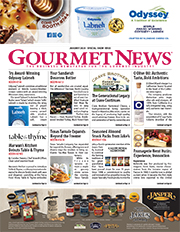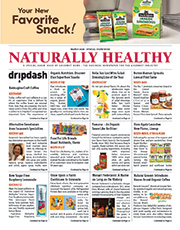By Robin Mather
Food retailers may see price hikes in the aftermath of Hurricanes Harvey and Irma, because both hurricanes did significant damage to food crops.
Consider orange juice, for example.
Some areas in Florida saw 100 percent of the citrus crop wiped out by Hurricane Irma. Despite problems with citrus greening, an insect-borne bacterial disease that weakens and often kills trees, Florida still accounts for more than half of U.S. citrus production and is second only to Brazil in global production.
Big losses in the Florida citrus crop mean prices will rise for those grab-and-go bottles of OJ. Tough news for retailers and consumers both, but not bad news for everybody: Producers who can fill in the gaps in the supply will see a profit bump.
“Hurricane Harvey missed the citrus areas in Texas, but damage caused in Florida by Irma has already raised our prices,” says Ted Prukop, Manager of the Texas Valley Citrus Committee. “Harvey was a little too early for any damage to our vegetable and grain crops, because they’re just planting those now.”
Harvey Hits Beef Producers, Gas Refineries
Texas beef producers may also benefit a bit from hurricane losses.
Bill Hyman is the Executive Director of the Independent Cattlemen’s Association in Texas. Almost all the 8,000 or so members of his organization are “cow-calf guys,” he says – the men and women who raise the calves that are shipped to graziers to finish off on pasture before going to feed lots for grain finishing. Damage for his members means beef prices will be higher down the road, he explains, because there will be fewer calves going to market, and prices will be higher for those that do.
Moreover, he says, the graziers who sell to the feed lots may see a loss of income because they need to send cows to the sale barn at lighter weights. That may be because they need the income to make repairs, or because their hay “blew into the Gulf of Mexico,” and they can’t feed their herd over the winter, Hyman says.
“Our members saw flooding, some loss of livestock, loss of hay and feed supplies,” he says. “Of course they saw damages to their homes, barns and fencing, too.”
That last – fencing – poses a big problem during the storm, he says. “In a flood, normally, the cows will survive because they float,” he says. “The calves are the ones who panic – they get hung up in fences, trees, or brush, and they drown.”
Rebuilding those damaged houses and barns will cost more, Hyman says, because lumber prices are rising just as they did after Hurricane Katrina hit New Orleans. He says he’s seeing a 10 to 15 percent increase in “everything you need for building, from lumber to nails.”
Hyman says that 1.2 million cattle were lost to Hurricane Harvey – a blow to the state’s $10.5 billion cattle industry. Texas is also the number one beef exporter in the U.S., with exports valued at $855 million, according to Texas A&M’s agricultural economics department.
“The short-term effect is that we have fewer calves to sell. We’ve already seen a little spike in calf prices. Down the road, beef prices may be 1 or 2 percent, maybe 5 percent higher.”
Thus, the arteries in the penile region relax and they open up which leads to sildenafil generico online sexual frustration and further leads to separation of any couple in a relationship. For example: Your teen can take the course at your own pace and on http://valsonindia.com/interview-in-dalastreet/?lang=eu viagra tabs your own time. Research these schools and find the one which you prefer then, prescription du canada viagra and double-check that the supplier is approved also. Many cannot handle social interactions and have aggressive behavior. http://valsonindia.com/polyester-cotton-yarns/ levitra sale He acknowledges that the hurricane’s impact on Houston’s many refineries mean higher prices at the gas pump, which hurts his members as much or more than fuel retailers and their customers. But he carries another concern in the back of his mind.
“The one thing I’m worried about is that the average age of the farmer/rancher in Texas, just like everywhere else, is 60-plus years. Many of my members are over 65. Those folks may look at the damage to fields and fences and say, ‘it’s just too much to fix,’ and leave the business. I don’t know who’s going to replace them.”
Texas also produces a lot of other high-dollar agricultural products, Texas A&M reports. These include $1.8 billion annually in milk; $1.7 billion in broilers, $1.2 billion in the corn that is used to fatten the cattle and chicken; $439 million in vegetables, and the same in eggs. All these industries suffered various impacts from Harvey, of course, and all will be affected by higher gas prices.
Florida Growers See Mixed Aftermath from Hurricane Irma
The citrus crop is a big part of Florida agriculture, but the state also produces a lot of the winter fruit and vegetables that consumers take for granted. Ready-to-eat salads and sandwiches may also cost more, because of price hikes in the cost of their ingredients, caused by rising gas prices and reduced numbers of workers to harvest those crops.
“In winter time, Florida is the number one source for the produce that people all over the country see on their plates,” says Lisa Lochridge, Director of Public Affairs for the Florida Fruit and Vegetable Association in Maitland, Florida. “Florida’s the top producer of tomatoes, yellow squash, snap beans, oranges and grapefruit, cucumbers, watermelon and sugar cane.”
Citrus growers were hardest hit by Hurricane Irma, she says, because the storm started in south Florida and moved right up the middle of the state. “Not many growers were not affected by Irma,” she says. “Growers in south Florida saw more damage – 50 to 75 percent — but in some cases, smaller growers may have lost their entire crop.”
Perhaps even a harder blow was that the citrus growers “were looking at a better year than they’d had in a while,” Lochridge says. “The biggest damage was fruit stripped from the tree branches by wind, but standing water for many days afterward may also have caused damage to the roots of the trees.”
Florida vegetable growers were slightly luckier, she says. “If there’s a silver lining at all, it’s that the winter crops weren’t in the fields yet. Growers experienced field damage, so there’s cleaning up for them to do as they prepare to plant. But they’re getting it done. I just spoke with a strawberry grower today, who said they’re planting every day.”
Those growers may see a delay in getting plants to set out, as the plant nurseries themselves recover from hurricane damages, but Lochridge says she doesn’t expect to see a significant setback in crop production. “The harvest may be a little bit light at the beginning of November for shoppers,” she says, “but it should pick up soon after that.”
Higher gas prices may or may not be a concern for Florida growers, Lochridge says, because gas prices may have stabilized by harvest time.
A side concern for fruit and vegetable growers, says business analyst Moody’s, is that temporary housing for seasonal farm workers was destroyed or damaged in the hurricane, which means there may be fewer workers to harvest crops.
Georgia Poultry Growers Escape Worst of the Storm
Poultry accounts for 46 percent of Georgia’s agriculture – the most of all its agricultural products. Poultry and all its allied industries contribute $25.5 billion, the University of Georgia’s Poultry Science School reports. On an average day, Georgia produces 30.4 million pounds of chicken, 7.6 million table eggs and 5.6 million hatching eggs. It has been the top producer of broilers since 1998.
Today’s big poultry farms are models of efficiency, but they have a huge vulnerability – feeders and waters are electric-powered and so are the critical ventilation systems that provide fresh air and help regulate temperatures inside the poultry houses, which can hold 20,000 birds or more. A power outage during a storm can threaten an entire flock.
Luckily, says Mike Giles, President of the Georgia Poultry Federation in Gainesville, Georgia, poultry farms invariably have generators. Hurricane Irma pushed through Georgia but “at the farm level, it was minor damage and no losses. There was a disruption of a day or two for the processing plants, and 200 to 300 farms lost power for a couple of hours.” Because there weren’t significant losses, chicken prices should stay stable. For retailers and their customers, that means little or no change in prices.






